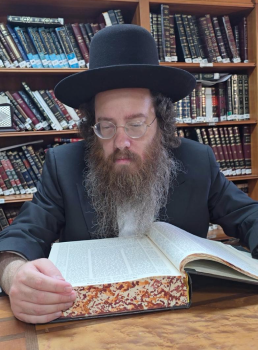Firstborn Donkey
Question
Answer
Shalom!
Thank you for your question
The Torah commands us to redeem a firstborn male donkey, a mitzva known as “pidyon petter chamor.” This mitzva is similar to the mitzva of pidyon haben, the requirement to redeem a firstborn son. For example, just as it is only the firstborn male donkey that must be redeemed, it is only the firstborn male child that must be redeemed, as well. So too, the mitzva of pidyon petter chamor in only binding upon “Yisraelim.” Kohanim and Leviim do not perform the mitzva of pidyon petter chamor just as they do not perform the mitzva of pidyon haben. In fact, even if a kohen or levi is only a part owner in a donkey that gives birth to a firstborn male, there is no mitzva to redeem the colt. This is true even if the donkey is owned by a female kohen or levi. So too, a donkey must be owned by a Jew in order to be eligible for pidyon petter chamor. If it is even partly owned by a Gentile, pidyon petter chamor is not performed.
It is explained that a donkey must be redeemed in order to recall the plague of the death of the firstborn Egyptians. The Egyptians are compared to donkeys while the Jewish people are compared to sheep. An additional reason for this mitzva is in order to express our appreciation to the donkeys that helped the Jews transport all their belongings, especially their newly-found riches, out of Egypt when they left. As a reward for this service, donkeys were imbued with a measure of sanctity requiring their firstborn to be redeemed. According to Kabbala, the mitzva of pidyon petter chamor represents the importance of elevating the material world. It is explained that the word “chamor,” donkey, is similar to “chomriut,” materialism. This teaches us that even materialism can be elevated and “redeemed” by imbuing it with spiritual value. There is also a view that the mitzva of pidyon petter chamor is intended to remedy the sale of Yosef who was the bechor, the firstborn of Rachel.
The redemption is performed by giving a kohen either a sheep or a goat in exchange for being able to keep the donkey. The actual value of the donkey, or the animal used to redeem it, does not matter. So too, one who would rather not use a sheep or a goat for the redemption may redeem the donkey with any object whose value is equal to the donkey itself.
The redemption ceremony should take place as soon as possible after the donkey is born. As is the case with a pidyon haben, a kohen is honored with officiating at the ceremony. The owner of the donkey presents a sheep, lamb, or other designated item (whose value is equal to that of the donkey) to the kohen. He then recites the blessing "…asher kideshanu b'mitzvotav v'tzivanu al pidyon petter chamor" and then declares that he is redeeming his donkey in exchange for the designated item. The animal or other item is then given to the kohen and the ceremony is concluded.
Source
Bechorot 3b, 5b; YD 321 with commentaries; Sefer Hachinuch 22; Zohar, Bo; Yerushalmi Shekalim 2:3.
